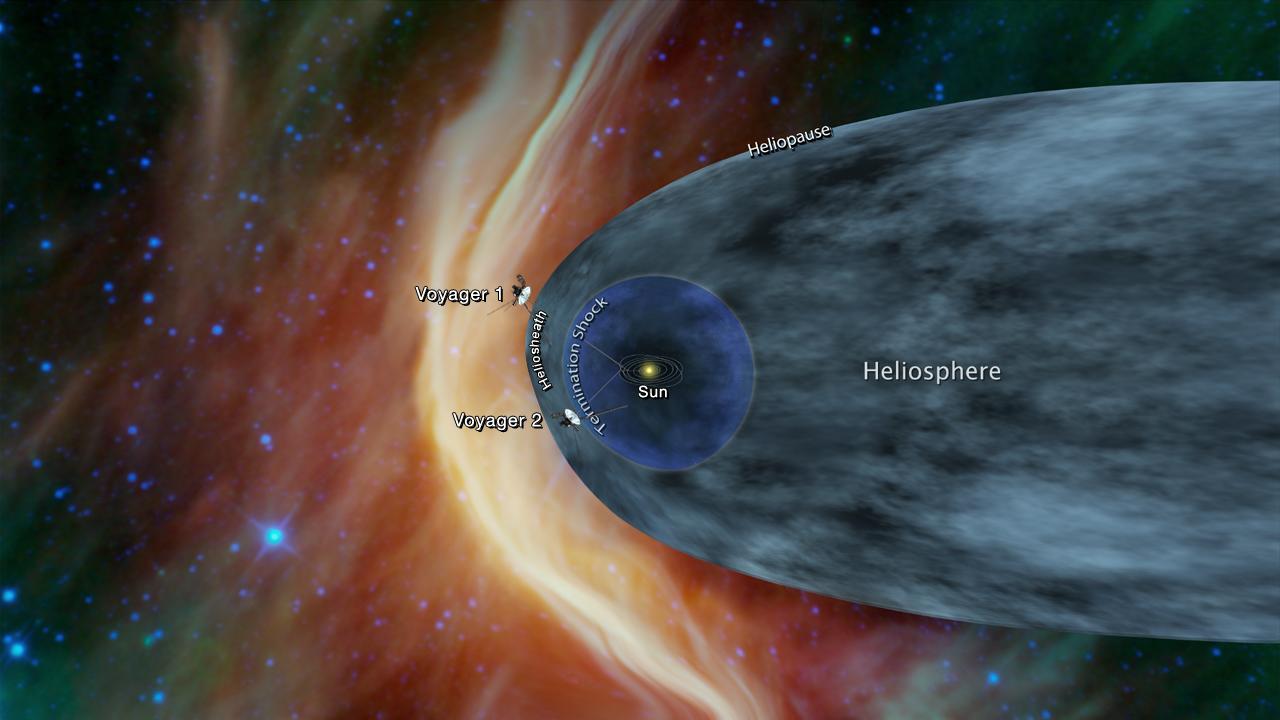NASA’s Voyager 2 will join its sibling, the first Voyager, as it approaches the very edge of the solar system. NASA announced on Friday that the spacecraft started detecting cosmic rays originating outside our solar system in deep space.
Voyager 2 was launched in 1977 and is currently located a little under 11 billion miles from Earth, which is more than 118 times the distance between Earth and the sun. Voyager 2 has been traveling through the outer layer of the heliosphere since 2007. The heliosphere is a huge bubble surrounding the sun and the planets orbiting it; the heliosphere consists of solar material and magnetic fields.
NASA scientists have now seen Voyager 2 reach the outer boundary of the heliosphere, which is also known as the heliopause, or the edge of the solar system. The spacecraft is the second man-made object to enter deep space after Voyager 1.
NASA’s Voyager 2 began detecting a 5% increase in cosmic rays rate with its Cosmic Ray Subsystem Instrument in late August. Its Low-Energy Charged Particle Instrument also detected an increase in cosmic rays. Cosmic rays are fast-moving particles originating from deep space. Since some cosmic rays are blocked by the heliosphere’s magnetic fields, the Voyager 2 is expected to detect an even higher percentage of cosmic rays after it slips into interstellar space.
In May 2012, Voyager 1 also picked up an increase in the rate of cosmic rays similar to the increase its sibling Voyager 2 is detecting now. The increase took place three months before Voyager 1 crossed the heliopause and entered deep space.
However, team members working on NASA’s Voyager 2 noted in a statement that this increase is not a definitive sign that the spacecraft will cross the heliopause. Since Voyager 2 is not yet in the same location as Voyager 1 was as it approached the edge of the solar system, it is possible that Voyager 2 will experience a different exit timeline from the edge of the solar system. At the time Voyager 1 left our solar system, it was in the heliosheath, which is the outer region of the heliosphere.
“We’re seeing a change in the environment around Voyager 2, there’s no doubt about that,” Voyager Project Scientist Ed Stone said in a statement. “We’re going to learn a lot in the coming months, but we still don’t know when we’ll reach the heliopause. We’re not there yet — that’s one thing I can say with confidence.”
NASA’s Voyager 2 is known to be the only spacecraft which has visited both Uranus and Neptune. The Voyager mission also led to the discovery of new moons around the two gas giants.
Both Voyager spacecraft were built at NASA’s Jet Propulsion Laboratory in Pasadena, Calif. The Voyager missions are part of the NASA Heliophysics System Observatory.





